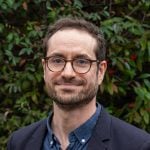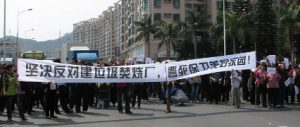What connects a group of Bayaka pygmy hunters in the Congo Basin, opposed to illegal loggers encroaching on their land; residents of Deptford, in south London, concerned about a noisy scrapyard across the road from a school; and members of the website oldweather.org, transcribing century-old ship log books to gather information about historical weather conditions?
The answer is they all have become citizen scientists, on the frontiers of a field that harnesses the wisdom of crowds, a do-it-yourself approach to technology and a radical approach to knowledge that blurs the traditional boundaries between local understanding and scientific expertise. In the words of Francois Grey, physicist at Tsinghua University in Beijing and coordinator of the Citizen Cyberscience Centre in Geneva, Switzerland, they all embody the spirit that: “Science is too important to be left to scientists alone”.
Science has never been wholly confined to the labs, of course – self-taught scientists included the great biologist TH Huxley; amateurs have taken part in a synchronised census of birds in the western hemisphere since 1900; and citizen stargazers have contributed significantly to our understanding of the heavens – but citizen science is currently undergoing a renaissance and can even be seen evolving into new subspecies, such as extreme citizen science, citizen cyberscience and DIYbio. This was in evidence last week at the London Citizen Cyberscience Summit, held at the Royal Geographical Society and University College London, where experts and enthusiasts – among them scientists, engineers, hackers and anthropologists – met to discuss and to devise collaborative and innovative solutions to scientific and environmental problems.
One illustrative case is Mapping for Change, a London-based social enterprise founded by Muki Haklay, a professor of geographic information science, and Chris Church, a veteran environmental campaigner, which uses online maps as tools for communication and action on sustainable development. Its director, Louise Francis – a scientist who trained in molecular systematics – explained how the organisation developed a methodology for collecting noise measurements with cheap, hand-held devices that the residents of Pepys Housing Estate in Deptford could use to create an online map of noise pollution in the area, as part of their campaign against an unpopular local scrapyard.

Mapping for Change’s map of noise levels at the Pepys Estate,
Deptford, in south London.
“For the first time, they had a visual way to show what they had been trying to say for the past eight years,” said Francis. At a public meeting, the community were able to present the authorities with the evidence. “It was the first time the local authority and the environment agency actually admitted there was a problem,” said Francis. After professional acousticians carried out a survey that largely confirmed the results of the residents’ study, the environment agency revoked the license for the scrapyard. “It was an amazing feat for the community,” said Francis. Although, she adds, it seems “bittersweet, insofar as the scrapyard have appealed against the revoking of the license and it’s currently being battled in court.”
The campaign acted as a catalyst. The same residents became concerned about local air quality and discovered there were no pollution monitoring stations in the area. So, Mapping for Change came up with a way to take measurements of nitrogen dioxide (NO2), ozone and heavy metals. To measure NO2, for example, residents fixed small diffusion tubes – at a cost of only £8 (80 yuan) each, including lab analysis – to lamp-posts at particular locations. The local authority installed a monitoring station as a consequence. And across the Thames, in Royal Docks, local residents concerned about a planned extension to the nearby London City Airport made a similar map of noise pollution.
“It was just amazing,” said Francis, referring to the transformational effects of the campaign. “One of the ladies from the community [in Deptford], who hadn’t had any formal education to a certain level, said she felt so good about being able to do this that she went off and studied and got an NVQ [a work-based qualification]. She said it was because of her involvement in this process that she was able to do this.”
Mapping can collate publicly available environmental information that residents may not have seen. However, as these examples demonstrate, the process can also challenge official narratives about the places we live in. Asking how we perceive our own communities can begin “a discussion about what the official dataset says and how can we go about sharing our local knowledge to represent the community,” said Francis. “We need to collect our own data to represent a range of different things.”

"Air quality egg” made by participants at the Citizen Cyberscience Summit
Collecting our own data is at the core of citizen science. At the summit was a remarkable array of projects that rose to this challenge. Engineers, hackers and anthropologists collaborated on how to develop discreet, hand-held devices for forest-dwelling pygmies to map the key resources – biological, cultural and spiritual – they wanted to protect from poachers and illegal loggers. Others discussed the community-based monitoring of chimpanzee habitats in Tanzania using Android smart-phones.
Beyond such place-based interventions, citizen cyberscience, through its innovative uses of the internet, has also expanded the types of science citizens can engage in, wherever they are in the world. The data on historical weather variability collected by users of oldweather.org (part of the Zooniverse, which also includes the popular website Galaxy Zoo, for crowd-sourcing galaxy classifications) helps to build better climate models that could tell us about future, potential impacts of climate change. In China, the country’s first cyberscience project is “Computing for Clean Water”: this harnesses citizens’ computing power to better understand a process called ultrafiltration, which can help to make water purification cheaper and more accessible.
For many scientists and theorists, the most remarkable thing about these projects is not so much the data that is being collected, as the changing nature of scientific discovery and expertise. As Jonathan Silvertown, professor of ecology at the Open University, put it at the summit: “Citizen science is as much about the sociology of knowledge as it is about the data.” Michael Nielsen is the author of Reinventing Discovery: The New Era of Networked Science, a recent book that addresses this growing field. “I think the day-to-day process of science will dramatically shift over the next few decades, speeding up the rate at which discoveries are made, and making possible whole new ways of attacking problems,” said Nielson in a recent interview. “But that will only happen if the culture of science becomes much more open—to reach its potential networked science must also be open science.”
Sam Geall is deputy editor at chinadialogue.




